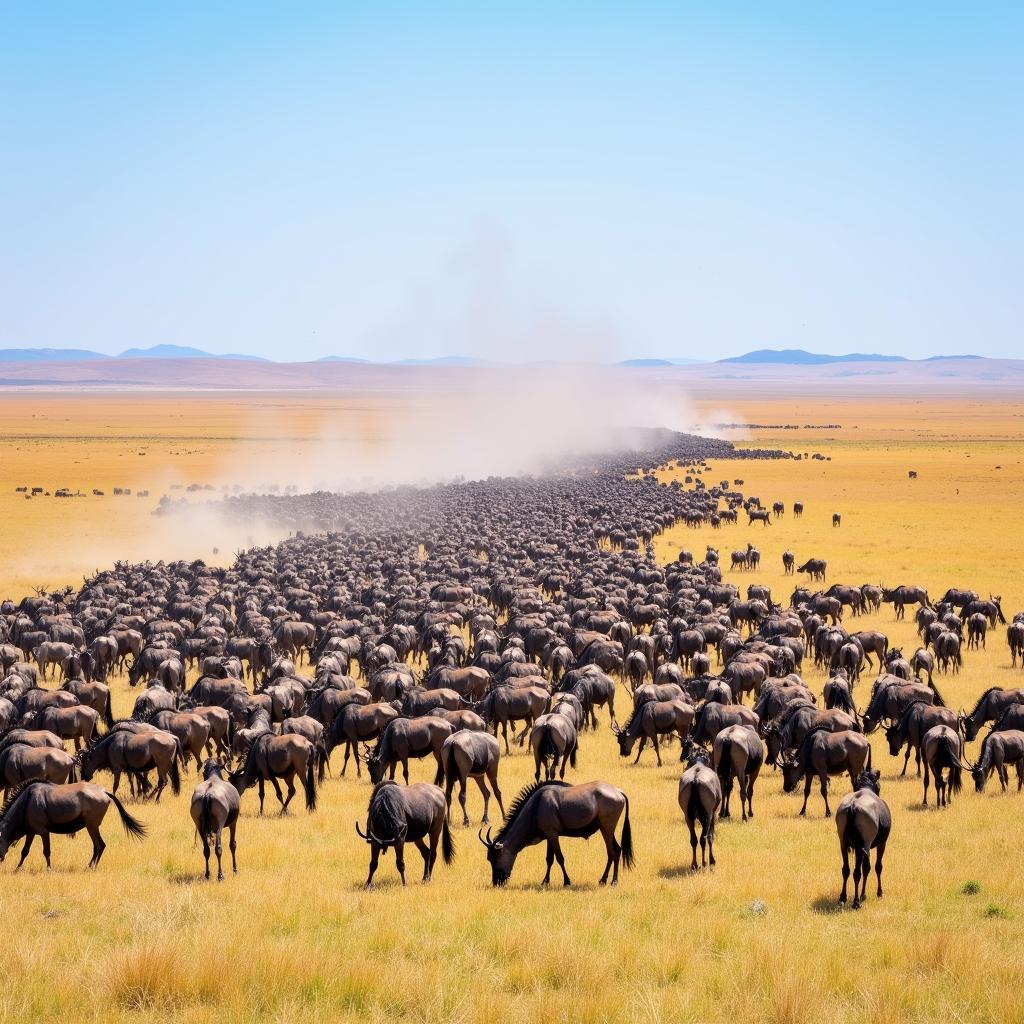African Buffalo: The Mighty Beast of Africa
The African buffalo, also known as the Cape buffalo, is a large, powerful herbivore that roams the savannas and grasslands of sub-Saharan Africa. It is a truly iconic animal, known for its imposing stature, fierce temperament, and vital role in the African ecosystem.
The African Buffalo: A Closer Look
The African buffalo is one of the “Big Five” game animals, a term used to describe the most challenging and dangerous animals to hunt in Africa. These animals are renowned for their strength, intelligence, and unpredictable behavior.
The African buffalo is a large mammal with a massive head, thick neck, and powerful shoulders. Its short, stocky legs give it incredible strength and agility, allowing it to run at speeds of up to 35 miles per hour. They are also incredibly social animals, living in herds that can range from a few dozen to several hundred individuals.
Physical Characteristics
- Size: An average African buffalo bull can weigh up to 1,800 pounds and stand 5 feet tall at the shoulder.
- Horns: Buffalo bulls have massive, curved horns that can span up to 4 feet in length. These horns are used for defense, competition, and digging.
- Color: Their coats range from dark brown to black, with a lighter patch of fur on the underside of their belly.
Behavior and Habitat
African buffalo prefer open savannas and grasslands with plenty of water and grazing areas. They are herbivores and spend most of their time grazing on grasses, leaves, and other vegetation. Their powerful sense of smell and hearing help them detect predators and danger.
They are known for their fierce temperament and will aggressively defend themselves if threatened. Their powerful horns and strong charges make them a formidable opponent for any predator.
The African Buffalo’s Importance in the Ecosystem
The African buffalo plays an essential role in the African ecosystem:
- Grazing: Their grazing habits help to keep the grasslands healthy and prevent overgrowth.
- Nutrient Cycling: They contribute to the nutrient cycling by depositing manure and urine, which fertilizes the soil.
- Food Source: They are a food source for predators like lions, leopards, and hyenas.
African Buffalo Conservation
Despite their significant role in the ecosystem, African buffalo populations have been declining due to habitat loss, poaching, and disease. Conservation efforts are essential to protect these magnificent animals.
Threats to African Buffalo
- Habitat Loss: As human populations expand, buffalo habitat is being fragmented and destroyed.
- Poaching: Buffalo are hunted for their meat, horns, and hides.
- Disease: Buffalo are susceptible to various diseases, such as bovine tuberculosis and rinderpest.
Conservation Efforts
- Protected Areas: Creating and maintaining protected areas is crucial to safeguard buffalo populations.
- Anti-Poaching Initiatives: Strengthening anti-poaching measures helps to reduce illegal hunting.
- Disease Control: Disease management programs are important for reducing the impact of outbreaks.
Frequently Asked Questions (FAQs)
Q: What is the difference between a buffalo and a bison?
A: While both are large, herbivorous mammals, they are different species. Buffalo are native to Africa, while bison are native to North America.
Q: Are African buffalo dangerous?
A: Yes, African buffalo are known for their unpredictable behavior and fierce temperament. They can be extremely dangerous, especially during mating season or when they feel threatened.
Q: Why are African buffalo called “Cape buffalo”?
A: The term “Cape buffalo” refers to the subspecies of African buffalo found in South Africa, particularly the Cape region. However, it’s a common name used for the species as a whole.
Q: What is the life expectancy of an African buffalo?
A: The average life expectancy of an African buffalo is about 15-20 years in the wild.
Conclusion
The African buffalo is an incredible creature that plays a vital role in the African ecosystem. These majestic animals are a testament to the power and beauty of the natural world.
We must continue to work towards their conservation, ensuring that these magnificent creatures continue to thrive in their natural habitat for generations to come.
Please note: The above is a sample article for informational purposes. It is important to conduct further research to ensure accuracy and completeness.
